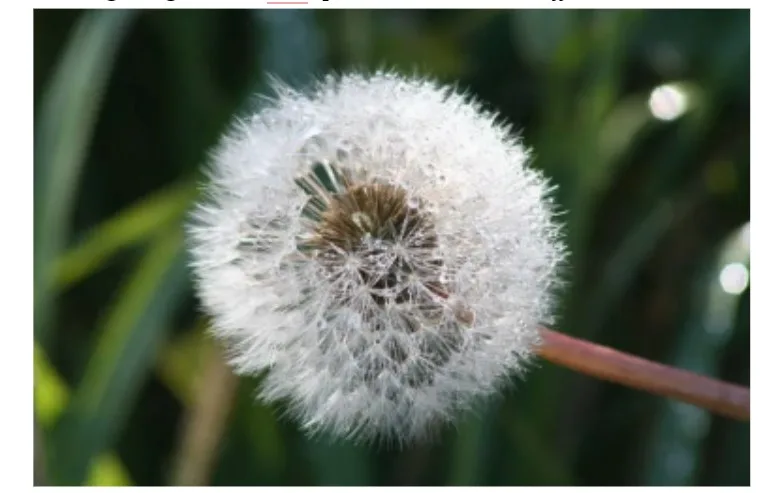
Apomixis: Apomixis, which comes from the Greek words "APO" (away from) and "mixed" (the act of mixing or mingling), refers to the formation of a plant from a seed without fertilisation or normal sexual reproduction. It is essentially an asexual process that results in a clone of the female parent plant.
In sexual reproduction, the ovule goes through developmental stages to produce the female gametophyte (embryo sac), which is then fertilized twice to produce the embryo and endosperm.
Apomixis is common in higher plants, with over 35 families known to exhibit it, including Gramineae, Compositae, and Rutaceae. Apomixis can also be seen in major cereals like maize and wheat. This article details apomixis, an important aspect of sexual reproduction in flowering plants for the NEET Exam, including its types, diagram, and function.
Flower – A Fascinating Organ of Angiosperms
Apomixis Definition
Apomixis is the asexual development of seeds or embryos without fertilisation. Plantlets can also replace seeds and flowers with bulbils. Apomixis produces offspring genetically identical to the parent plant, except for nonrecurrent apomixis. The term is derived from the Greek words "away from" and "mixing."
Unlike normal asexual plant reproduction, which involves propagation from cuttings or leaves, apomixis produces viable seeds containing an asexual embryo. Apomixis refers specifically to agamospermy in flowering plants, which is clonal reproduction via seeds. While agamospermy could theoretically occur in gymnosperms, it does not appear to exist in that group.
Apogamy is a related term that has had different meanings over time. In plants with independent gametophytes, such as ferns, apogamy, and apomixis are used interchangeably to describe the formation of sporophytes via the parthenogenesis of gametophyte cells.
Male apomixis, also known as paternal apomixis, is the process by which pollen's genetic material replaces an egg's genetic material.
Pre-Fertilisation- Structures And Events in Flowering Plants
Apomixis Diagram
The following image shows the Apomictic Taraxacum officinale :

Types of Apomixis
Plants can reproduce asexually through apomixis, which includes three primary types: adventitious embryony, apospory, and diplospory.
1. Diplospory
Definition: In diplospory, the embryo sac develops from the megaspore mother cell either through direct mitotic division or by interrupting meiosis.
Process:
- Mitotic Diplospory: The megaspore mother cell undergoes three rounds of mitosis to produce eight nuclei. The resulting embryo sac is unreduced and contains the same number of chromosomes and genetic material.
2. Apospory
Definition: Apospory involves the development of the apomictic embryo sac from nucellar cells and is the most common type of apomixis in higher plants.
Process:
- Aposporous Initial Cells: These cells differentiate and undergo mitosis to form an embryo sac. Multiple embryo sacs may sometimes be present.
- Timing: The initiation of the apospory embryo sac can occur concurrently with or can displace or interrupt the formation of the sexual embryo sac.
Pollination, Types, Agents, Pollen Pistil Interaction
3. Adventitious Embryony
Definition: Adventitious embryony is a sporophytic form of apomixis where embryos develop directly from the nucellus or integument of the ovule.
Process:
- Embryo Development: The embryo develops through mitotic division, forming a bud-like structure.
- Seed Formation: Simultaneous fertilisation in the adjacent sexual embryo sac is necessary for the formation of viable seeds. The developing embryos grow towards the sexual embryo sac to obtain nutrients and signals.
Additional types of apomixis are based on occurrence and frequency, which are briefly discussed below.
Post Fertilisation – Structures and Events in Flowering Plants
4. Recurrent and Non-recurrent Apomixis
- Recurrent Apomixis: In recurrent apomixis, both the egg cell and embryo are diploid, and the embryo sac develops from the megaspore mother cell.
- Non-recurrent Apomixis: In non-recurrent apomixis, both the egg cell and embryo are haploid, and the embryo develops directly from an egg cell without fertilisation.
5. Vegetative Apomixis
Definition: Vegetative apomixis involves the production of vegetative bulbils or buds in the inflorescence instead of flowers.
Characteristics: Vegetative bulbils or buds are easily reproducible and contribute to the propagation of these plants.
Examples: This type of apomixis is observed in plants such as Fragaria, Agave, and Poa bulbosa.
Embryo, Development, Monocots And Dicots Plants, Embryogenesis
Characteristics of Apomixis
Apomixis is an asexual method of plant reproduction that occurs in many species, particularly fruit crops. Its key characteristics include:
- Asexual Reproduction: Apomixis does not involve the fusion of male and female gametes, resulting in offspring that are genetically identical to their parent plant. Apoptism does not increase genetic variability within a population because of this lack of genetic recombination.
- Absence of Gene Flow: Apomixis does not allow for gene flow, preventing the mixing of genes from different sources. This characteristic contributes to the genetic purity and stability of plant populations.
- Rapid Development of Pure Lines: Apomixis promotes the rapid generation of pure lines, which can be useful in plant breeding programs. This is achievable through haploid parthenogenesis, a process in which embryos develop from unfertilized egg cells.
- Genetic Control: Apomixis can be genetically controlled, making it a useful tool for conserving superior genotypes and maintaining hybrid vigour in plant populations.
- Widespread Occurrence: Apomixis has been documented in over 300 plant species from 35 families, demonstrating its importance and prevalence in the plant kingdom.
Types of Seeds, Monocot and Dicot, Advantages, Seed Viability
Apomixis Examples
Apomixis is a fascinating form of asexual plant reproduction, where seeds and embryos are produced without fertilisation. This phenomenon was initially discovered in Alchornea ilicifolia and has since been observed in over 400 flower plant species.
Apomixis is notably found in several genera, including:
- Crataegus (Hawthorns)
- Amelanchier (Shadbush)
- Sorbus (Rowans and Whitebeams)
- Rubus (Brambles or Blackberries)
- Poa (Meadow Grasses)
- Nardus stricta (Matgrass)
- Hieracium (Hawkweeds)
- Taraxacum (Dandelions)
These examples underscore the diversity and widespread occurrence of apomixis in nature, highlighting its importance in plant reproduction.
Sexual Reproduction in Flowering Plants MCQ
Apomixis Advantages
The following are the Advantages of Apomixis
- Rapid Multiplication: Apomixis allows for the quick multiplication of genetically uniform progenies without the risk of segregation, ensuring consistency in desired traits.
- Fixed Hybrid Vigour: Apomixis enables the permanent fixation of hybrid vigour or heterosis in crop plants, improving performance and productivity.
- Maternal Trait Preservation: Apomixis allows for the exploitation and preservation of desirable maternal traits from one generation to the next, maintaining valuable characteristics over time.
Applications of Apomixis
Apomixis has practical applications in agriculture:
- Development of Pure Lines: Apomixis enables the rapid production of pure lines in plants. When treated with colchicine, processes like haploid apogamy and parthenogenesis can generate haploid plants, which become diploid pure lines. These pure lines are valuable for breeding high-yielding cultivars and hybrids.
- Maintaining Purity: Obligate apomixis breeds retain the mother plant's characteristics, ensuring genetic purity from generation to generation. This trait can be maintained for several generations, aiding in the preservation of specific genotypes.
- Heterosis Conservation: Obligate recurrent apomixis maintains hybrid vigour across generations. Because apomixis prevents segregation, heterosis can be easily maintained, resulting in consistently high-performing plants.
- Easy Hybrid Seed Production: Apomixis makes hybrid seed production easier by producing seeds using apomictic methods, eliminating the need for traditional crossing methods. When a hybrid is developed with an apomictic line as a parent, hybrid seed production occurs automatically, making it more cost-effective than traditional methods.
PW program is an excellent choice for NEET students who want to prepare confidently for the upcoming NEET examination. PW offers the best free NEET course at an affordable price for students. Students can fulfill their dream of becoming doctors thanks to experienced faculty members, comprehensive study materials, and regular assessments.
| NEET Exam Important Links | |
|---|---|
| NEET Biology Syllabus | NEET Biology Diagrams |
| NEET Biology MCQ | NEET Biology Chapter wise Weightage |
| NEET Biology Notes | NEET Previous Year Question papers |
Apomixis FAQs
Is Mango an example of apomixis?
Is Apple an example of apomixis?
What is the importance of apomixis?
Which plant exhibits apomixis?
What is an example of apomixis in NEET?










